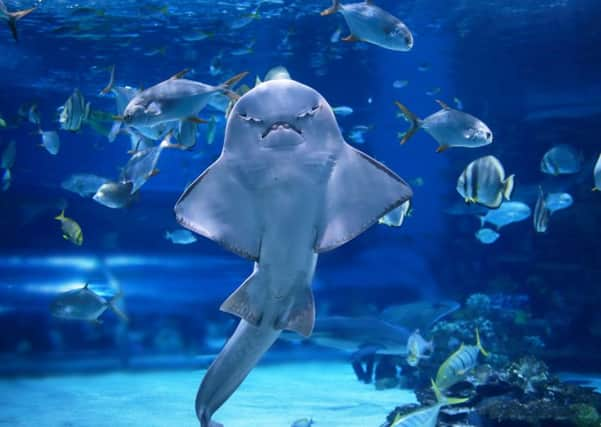Sawfish, angelshark and eagle ray lead list on the edge of extinction


The list, created by international conservation charity Zoological Society of London (ZSL), ranks the world’s 50 most evolutionarily distinct and globally endangered (Edge) sharks, rays and chimeras – known collectively as chondrichthyes.
Each species included has few or no remaining close relatives and so effectively represents a distinct branch of the tree of life. This means each is truly irreplaceable – if they disappear there be nothing like them left on the planet.
Advertisement
Hide AdAdvertisement
Hide AdAt number one is the fierce-looking largetooth sawfish, which uses its long tooth-lined snout to slash at prey.
The distinctive creature is under threat from unsustainable fishing activities as it is often landed as by-catch in nets. It is also considered by ZSL to be the world’s highest-ranking Edge species.
Three other sawfish make up the top four, followed by the unusual “flat” angelshark.
The longhead eagle ray, which has a tail measuring three times the length of its body that is uses to catch food, is placed ninth on the list.
Other weird and wonderful species at risk of vanishing include the highly charged Caribbean electric ray, which uses its special powers to deter attackers or shock prey.
Some of the most world’s recognisable and iconic species also feature on the list.
These include the fearsome great white, immortalised in the Jaws films, distinctive hammerheads and the whale shark, which is the biggest fish in the sea.
Basking sharks, which can be seen feeding off Scotland’s west coast during summer, are placed at number 23.
Advertisement
Hide AdAdvertisement
Hide AdDespite their notoriety in the media, sharks are one of the least-studied groups of animals on earth. Some species are so elusive they have never been captured on camera.
Many have suffered steep declines in recent decades due to a number of causes.
Some populations are being decimated by targeted fishing, driven by a market for fins and other body parts, as well as being unintentionally caught.
Habitat degradation – due to development, mangrove deforestation, pollution and trawling – is also a factor.
The Edge list has been created to help conservationists identify and prioritise species in greatest need of attention.
“Sharks, rays and chimeras, making up the cartilaginous fish, have been around since the age of the dinosaurs, but due to human activities their modern relatives are facing threats all over the world,” Edge sharks co-ordinator and marine biologist Fran Cabada said.
“Unfortunately, sharks have a bad image. This means people often can’t see beyond the negative and usually exaggerated stories, and don’t understand just how threatened and important they are.
“The new Edge sharks and rays list gives us the opportunity to highlight the most unique sharks and rays on our planet, which are also the most endangered, so that we can target conservation efforts where it’s needed most.”
Advertisement
Hide AdAdvertisement
Hide AdZSL’s marine and freshwater conservation programme manager Dr Matthew Gollock said: “The Edge sharks and rays list comprises some of the most interesting and unique fish we have on this planet.
“The modern extinction of a single species from this list would cause the loss of millions of years of evolutionary history.”